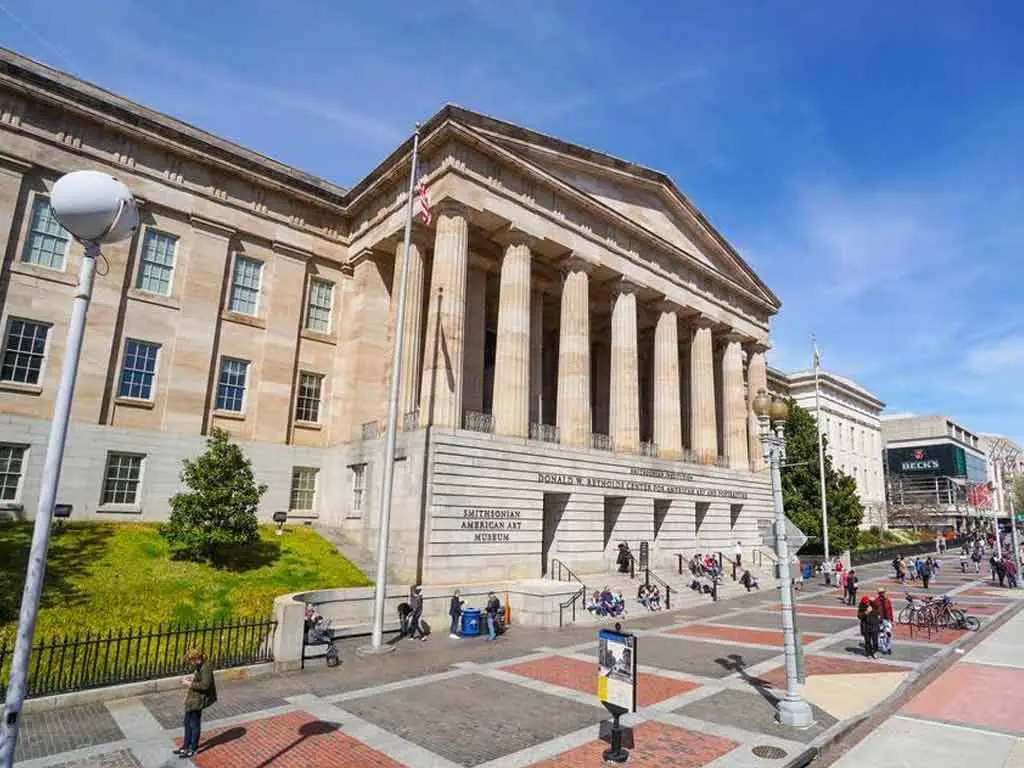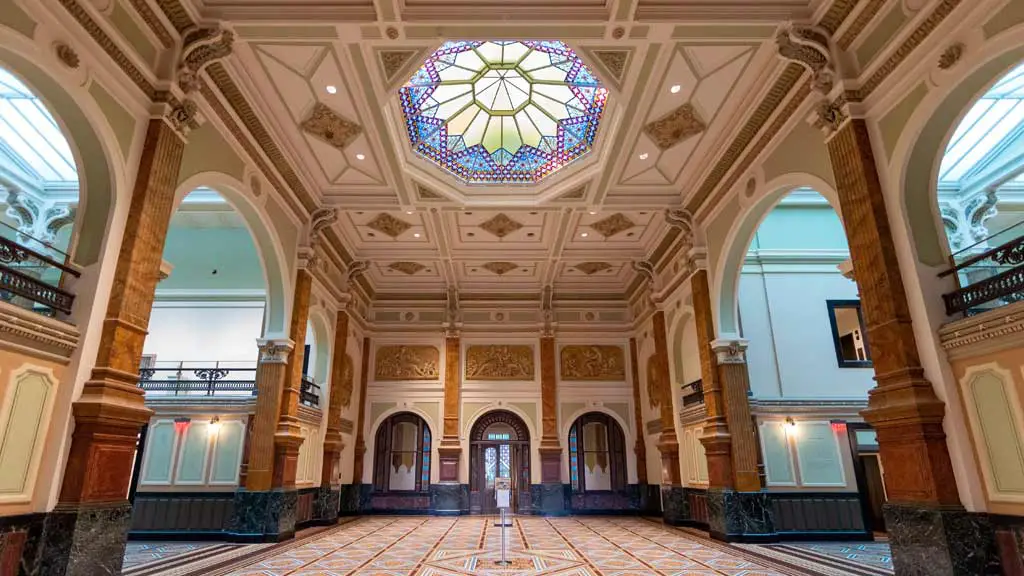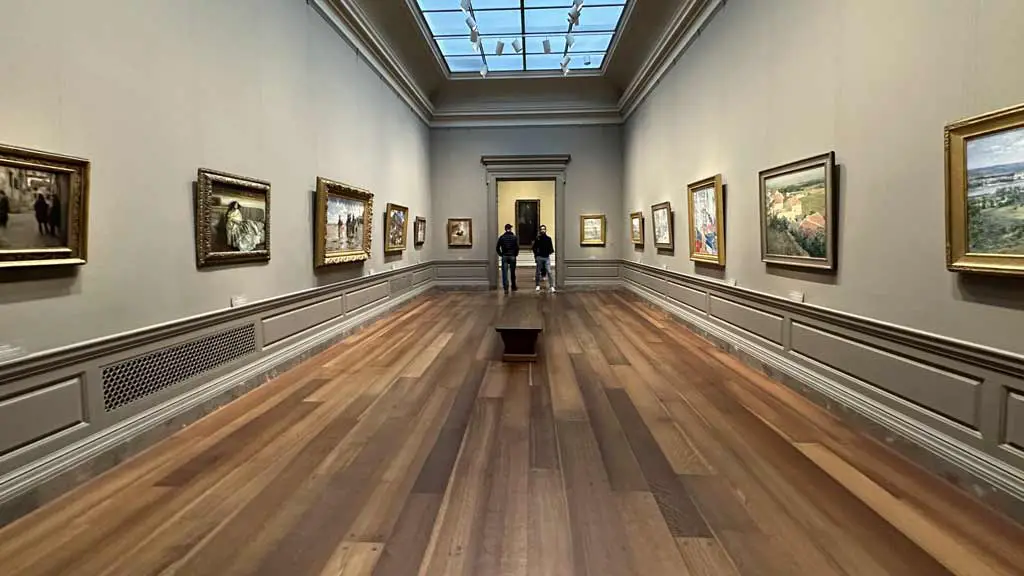Located in the heart of the vivid capital city, Washington, D.C., the history of the Art Museum is a captivating journey through time and creativity.
From its inception to the present day, the museum stands as a testament to the evolution of artistic expression and cultural heritage.
Visitors are immersed in a world where masterpieces from renowned artists intertwine with the rich tapestry of American history.
Exploring the corridors of the Art Museum in Washington, D.C., is like embarking on a visual odyssey that transcends boundaries and speaks to the soul of humanity.
Each exhibit is a window into the past, offering a glimpse into the minds of visionaries who shaped the artistic landscape.
As visitors wander through the galleries, they are not just spectators but participants in a narrative that celebrates the beauty and complexity of the human experience.
With its diverse collection and commitment to preserving artistic legacies, the Art Museum in Washington, D.C., is a cultural gem that continues to inspire and educate generations of art enthusiasts.

Evolution of Art Museums in Washington DC
Art museums in Washington DC have a rich history that showcases the evolution of artistic appreciation in the nation’s capital.
Early Establishments and Growth
The first art museum in Washington DC was the Corcoran Gallery of Art, founded in 1869. It played a pivotal role in promoting American artists and providing a platform for local talent to exhibit their work.
Over the years, other institutions like the National Gallery of Art and the Smithsonian American Art Museum emerged, further enriching the cultural landscape of the city.
These museums continue to showcase a diverse range of artworks, spanning from classical pieces to contemporary installations.
Visitors can explore rich collections of paintings, sculptures, and artifacts that offer a glimpse into the evolution of artistic expression in America.
Major Museums and Their Histories
The National Gallery of Art, established in 1937, is renowned for its impressive collection of European and American masterpieces, making it a must-visit destination for art enthusiasts.
The Smithsonian American Art Museum, housed in the historic Old Patent Office Building, boasts a diverse collection of artworks that reflect the rich tapestry of American history and culture.
These major museums continue to be hubs of creativity and inspiration, ensuring that the legacy of art in Washington DC thrives for generations to come.
Architectural Marvels and Their Significance
Art museums in Washington, D.C. boast architectural marvels that not only house priceless artworks but also serve as masterpieces themselves.
Let’s explore the design innovations and influential architects behind these cultural landmarks.
Design Innovations

The National Gallery of Art stands out for its neoclassical design, envisioned by architect John Russell Pope.
Its West Building boasts a striking façade inspired by the Pantheon in Rome, characterized by grand columns and a monumental staircase.
The East Building, a modernist addition designed by I.M. Pei, contrasts with the classical architecture of the West Building, featuring geometric shapes and a dramatic atrium.
The Hirshhorn Museum and Sculpture Garden, designed by Gordon Bunshaft, is known for its unique circular structure, offering a dynamic space for contemporary art exhibitions.
These architectural innovations not only provide functional spaces for art display but also contribute to the cultural landscape of the capital.
John Russell Pope, renowned for his classical designs, made a lasting impact on Washington, D.C.’s architectural scene with the National Gallery of Art and the Jefferson Memorial.
I.M. Pei, a celebrated modernist architect, introduced a contemporary touch to the city with iconic structures like the East Building of the National Gallery of Art and the United States Holocaust Memorial Museum.
Notable Collections and Exhibits
The history of art museums in Washington, DC, is rich and diverse, showcasing a wide range of collections and exhibits that span various periods and styles.
Here are some notable art museums in DC and their highlights:
Permanent Collections

Washington, D.C.’s art museums boast remarkable permanent collections that showcase a diverse range of artistic styles and periods.
The National Gallery of Art houses an extensive collection of European and American masterpieces, including works by renowned artists like Leonardo da Vinci, Vincent van Gogh, and Claude Monet.
Visitors can admire iconic paintings, sculptures, and decorative art pieces that span centuries of artistic achievement.
The Smithsonian American Art Museum features an impressive collection of American artworks, highlighting the country’s cultural heritage and creative expression.
With a focus on American artists, the museum’s permanent collection includes works from the colonial period to contemporary art movements.
Visitors can explore a rich tapestry of paintings, sculptures, photographs, and new media installations that celebrate the diversity of American art.
Famous Temporary Exhibits
In addition to their permanent collections, art museums in Washington, D.C., host famous temporary exhibits that attract art enthusiasts from around the world.
These temporary shows provide visitors with unique opportunities to view works by both established and emerging artists, often focusing on specific themes, artistic movements, or cultural phenomena.
The Corcoran Gallery of Art frequently curates temporary exhibits that offer fresh perspectives on contemporary art trends and artistic practices.
Visitors can experience cutting-edge installations, multimedia artworks, and performance pieces that challenge traditional notions of art and creativity.
Similarly, the National Gallery of Art regularly organizes temporary exhibits that delve into diverse artistic genres and historical periods.
From special exhibitions dedicated to individual artists to thematic displays exploring global artistic traditions, these temporary shows enhance the museum’s dynamic programming and engage audiences with new perspectives on art.
Educational Programs and Outreach
The art museums in Washington, D.C. offer a range of educational programs and outreach initiatives to engage with the community and enrich visitors’ experiences.
Community Engagement

The museums collaborate with local schools to provide educational tours and workshops for students.
They organize special events and activities to involve the community in art-related discussions and interactive sessions.
The museums offer lectures, symposiums, and artist talks to deepen visitors’ understanding of art history and contemporary practices.
Interactive exhibits and hands-on workshops cater to diverse audiences, including children, families, and adults, fostering creativity and art appreciation.
Challenges and Future Prospects
Art museums in Washington, DC, face several challenges and have various future prospects:
Preservation Issues
Preservation issues in art museums in Washington, D.C. revolve around maintaining the integrity of the artworks and artifacts in the face of environmental factors such as light exposure, temperature, and humidity.
These museums face the challenge of balancing the need for public access with the preservation of delicate pieces through advanced conservation techniques and strategic display rotations.
Trends in Museum Management
Trends in museum management in Washington, D.C. are shifting towards a more community-centered approach, focusing on inclusivity, diversity, and accessibility.
Museums are increasingly implementing digital technologies for virtual tours, online exhibitions, and interactive experiences to engage a wider audience.
Collaborations with local artists and community groups are becoming more common, fostering a sense of belonging and cultural exchange within the museums’ programming.
Frequently Asked Questions
What is the focus of the article about art museums in Washington, D.C.?
The article explores the evolution, historical significance, architectural innovations, permanent collections, temporary exhibits, and educational programs of art museums in Washington, D.C.
What are some notable art museums mentioned in the article?
The article discusses museums like the Corcoran Gallery of Art, the National Gallery of Art, and the Smithsonian American Art Museum as notable institutions in Washington, D.C.
How are art museums in Washington, D.C. adapting to the future?
Art museums in Washington, D.C. are integrating digital technologies, collaborating with local artists, engaging with the community, fostering inclusivity, diversity, and accessibility, thus shaping a more vivid and progressive future for museum management in the capital.
Conclusion
The article has highlighted the rich historical evolution, architectural grandeur, and diverse art collections of prominent art museums in Washington, D.C.
From the Corcoran Gallery of Art to the Smithsonian American Art Museum, these institutions stand as pillars of cultural heritage in the capital.
The discussion on temporary exhibits and educational initiatives demonstrates the museums’ commitment to engaging with the public and fostering artistic exploration.
Despite their invaluable contributions, these museums face challenges, including the preservation of artworks in the face of environmental threats and the delicate balance between accessibility and conservation.
However, the adaptation of community-centered strategies, promotion of inclusivity, diversity, and enhanced accessibility are shaping a more vivid future for these institutions.




Tony Spadafora